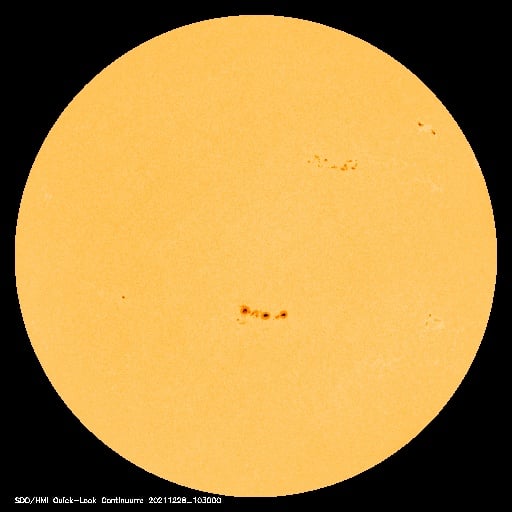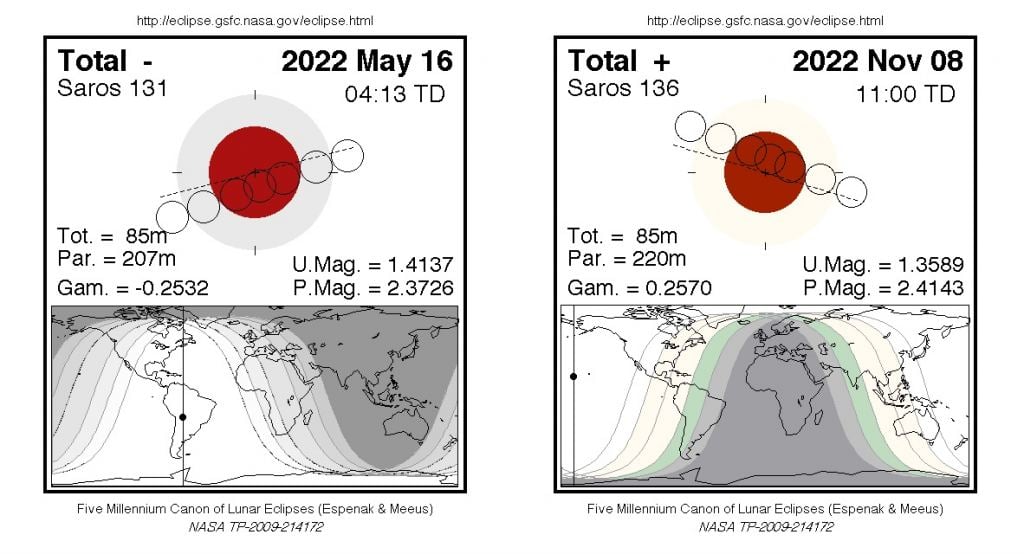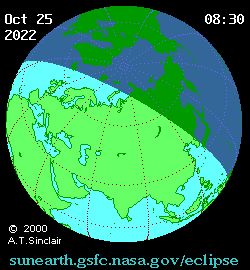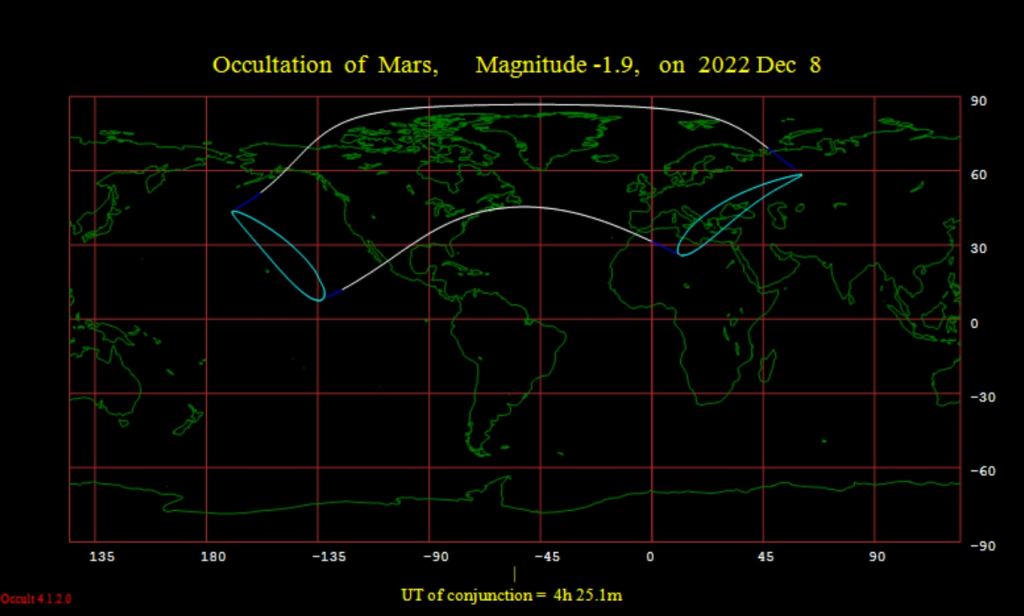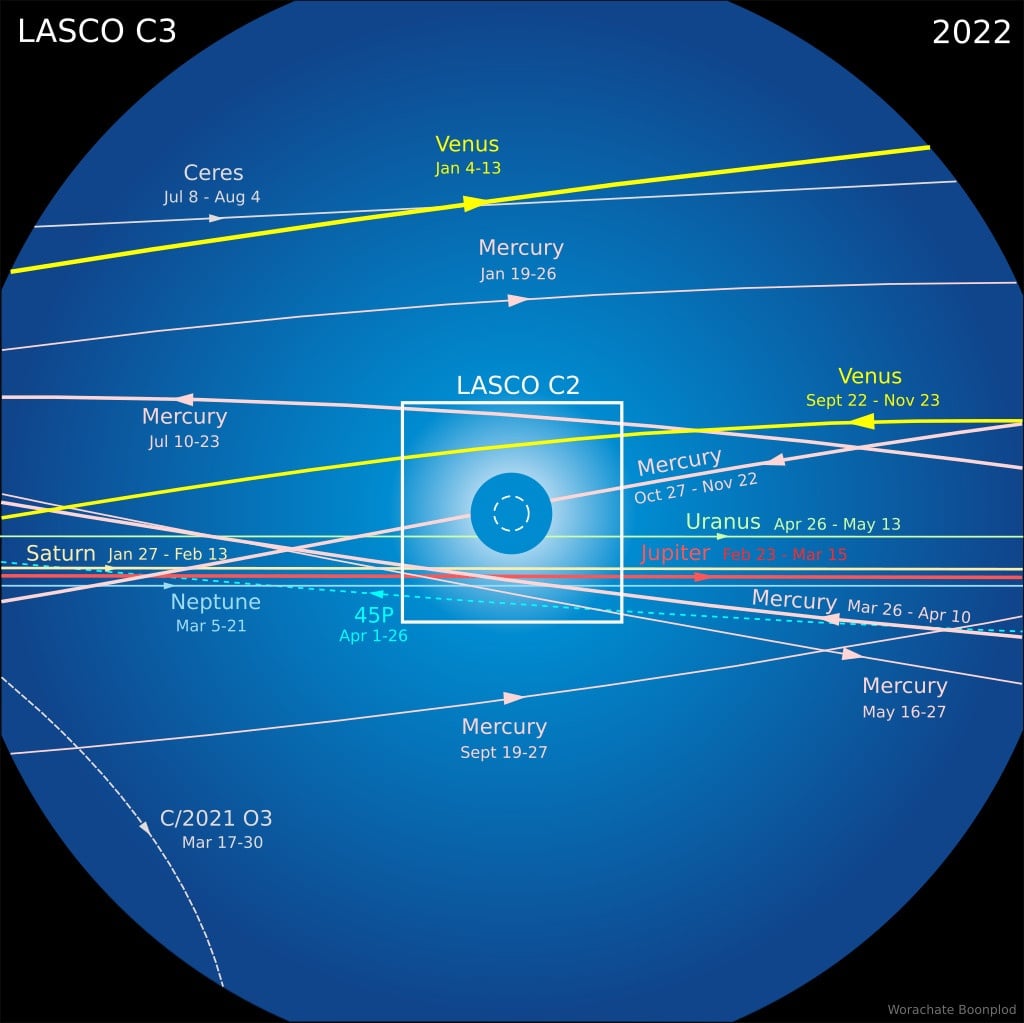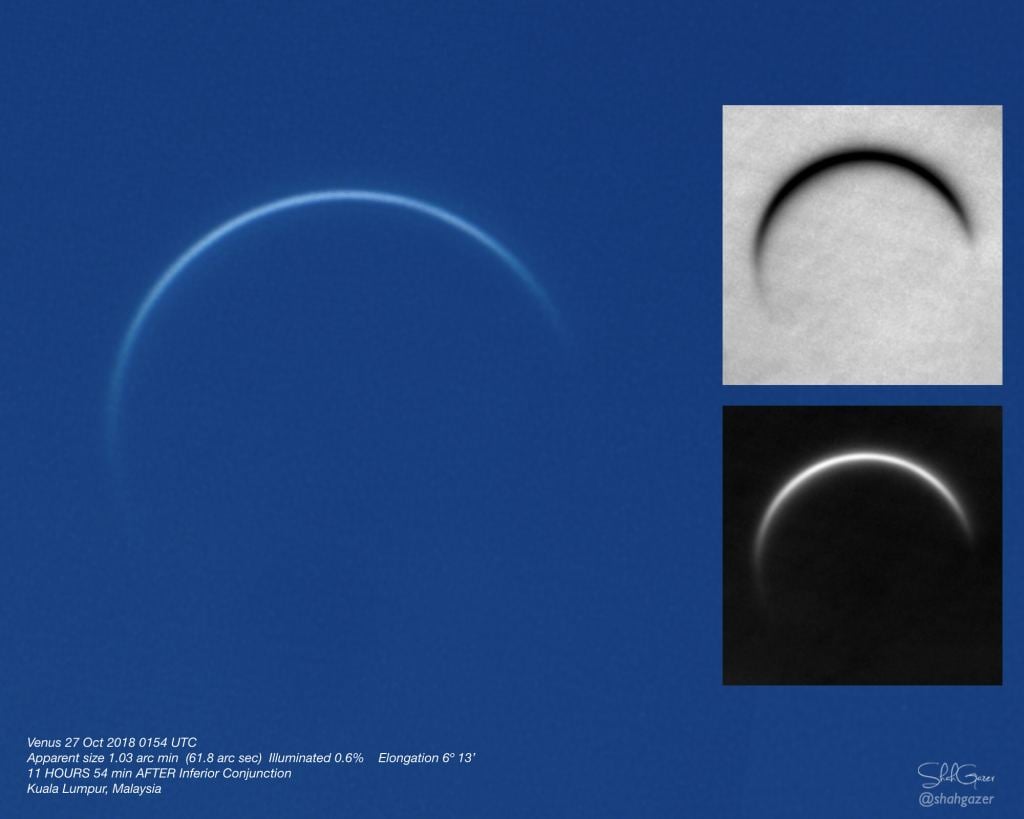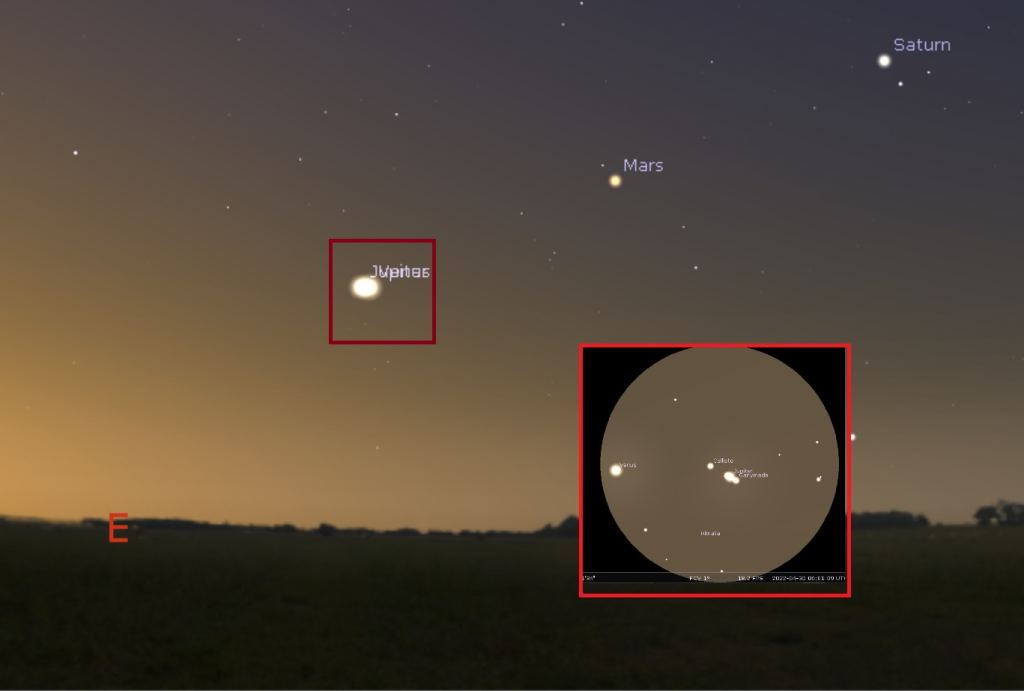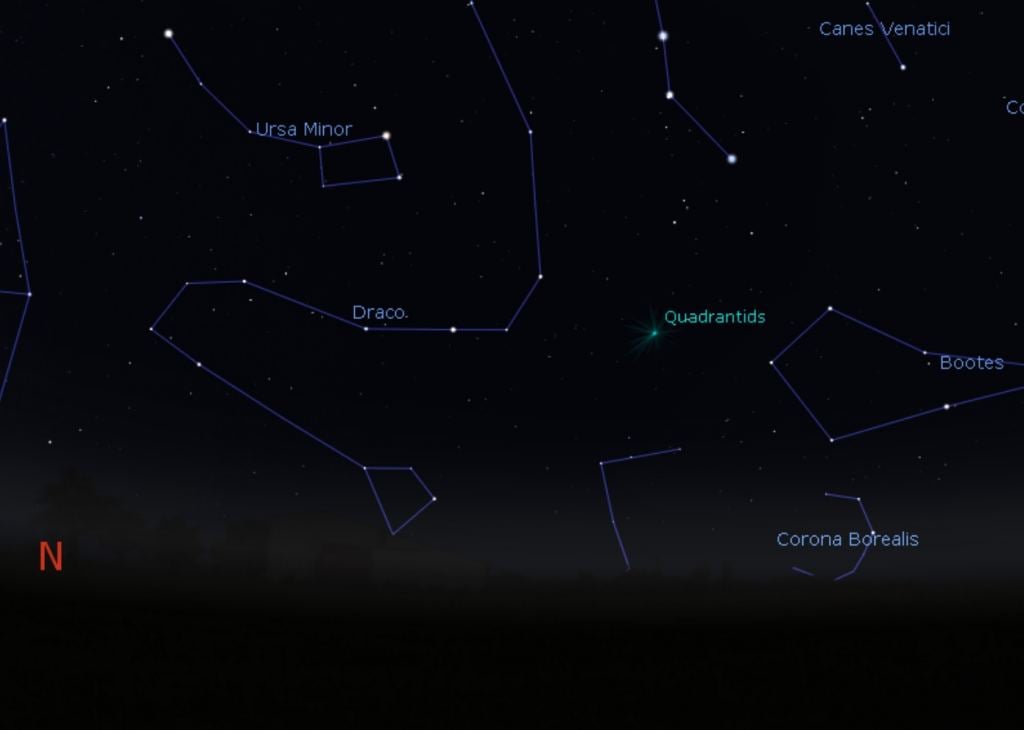Meteor showers, eclipses and a fine opposition of Mars top out astronomy 2022.
2022 offers another fine sky watching year. 2021 brought us a remote Antarctic total solar eclipse, a surprise Christmas comet C/2021 A1 Leonard, and a return of solar activity with solar cycle Number 25. 2022 promises more of the same, as the solar cycle heads towards an active maximum in 2025. But there's lots more in store in the sky in 2022. Alas, no ' red nova ' is expected in 2022.
Here's what we're looking forward to in the sky in 2022. Let's start with the very 'best of the best' for the year;
Top 10 Astronomical E vents for 2022
-Solar cycle 25 heads towards its peak
- Jan uary 3 rd: Comet A1 Leonard reaches perihelion
-January 3 rd: The Quadrantid meteor shower occurs near New Moon
- Apr il 30 th: Partial Solar Eclipse
- May 16 th: Total Lunar Eclipse
-October 4 th: Asteroid 23 Thalia occults a +6th magnitude star
- Oct ober 25 th: Partial Solar Eclipse
- Nov ember 8 th: Total Lunar Eclipse
-December 8 th: The nearly Full Moon occults Mars
- Dec ember 8 th: Mars at opposition
You can see an expanded, in-depth list of events for the coming year in our book The Universe Today’s Guide to Viewing the Cosmos* and Guy Ottwell's new digital Astronomical Calendar 2022*. We'll also be tweeting all of the astronomical action in 2022 as @Astroguyz on Twitter.
Eclipses in 2022
There are four eclipses in 2022 (the minimum that can occur in a calendar year), two solar and two lunar.
Those four eclipses are:
-April 30th: a 64% partial solar eclipse favoring the SE Pacific and southern South America.
-May 16th: a total lunar eclipse (totality is 1 hour and 25 minutes in duration) favoring the Americas, Europe and Africa.
-October 25th: an 86% partial solar eclipse favoring Europe, NE Africa, the Middle East and western Asia.
-November 8th: a total lunar eclipse (totality is also 1 hour and 25 minutes in duration) favoring Asia, Australia, the Pacific and the Americas.
The Sun, Moon and Seasons in 2022
The biannual solstices and equinoxes mark the start of the astronomical seasons. Either equinox in September and March are good times to watch for peaks in auroral activity, via a phenomenon known as the Russell-McPherron effect. In 2022, aurorae in general should become more frequent, as Solar Cycle 25 intensifies. The equinoxes also mark the start of geostationary satellite flare and eclipse season, as the distant satellites rise briefly into naked eye visibility, only to be extinguished as they hit the Earth's shadow. And speaking of satellites, the International Space Station enters spans of full illumination near either solstice, with sighting opportunities favoring the northern hemisphere in June, and the southern hemisphere in December.
Here are the seasonal dates and more for 2022:
January 4th: Earth is at perihelion.
March 20th: Northward equinox.
June 21st: Northward solstice.
July 4th: Earth is at aphelion.
September 22nd: Southward equinox.
December 21st: Southward solstice.
The path of the Moon continues to roughly follow the ecliptic plane in 2022, as we head towards the steep years around the Major Lunar Standstill in 2025. We also have 12 Full Moons and 13 New Moons in 2022, with the 2ndNew Moon of April on the 30thbeing a ' Black Moon '. And while two Full Moons (aka Supermoons) fall near lunar perigee in 2022 on July 13thand August 10th, no Full Moons fall within a day of apogee in 2022.
Lunar Occultations in 2022
The Moon sweeps out a half degree wide path through the sky on its trek, occasionally passing in front of a planet or star. In 2022, the Moon occults 3 planets 7 times, including:
-May 27th: The 11% illuminated waning crescent Moon occults Venus for Madagascar.
-June 22nd: The 33% illuminated waning crescent Moon occults Mars for Antarctica.
-July 21st: The 39% illuminated waning crescent Moon occults Mars for NE Asia.
-October 24th: The 1% illuminated waning crescent Moon occults Mercury for NW North America.
-October 25th: The slim crescent Moon occults Venus for South Africa, only an hour after a partial solar eclipse.
-November 24th: the 1% waxing crescent Moon occults Mercury for Antarctica.
-December 8th: the Full Moon occults Mars (at opposition) for North America and Europe.
The Moon versus stars- The Moon does not occult a +1 magnitude or brighter star in 2022.
The Best Asteroid Occultations in 2022
These are tougher events to catch, as the 'shadow' of a distant asteroid briefly passes in front of a distant star. Still, such events can yield information of the asteroid's size, shape and position… and occasionally, tiny orbiting moonlets even make themselves known.
Here are the top asteroid occultations (+6 magnitude stars only) for 2022:
-514 Armida occults a +6.8 magnitude star on March 12thfor South America.
-410 Chloris occults a +6.4 magnitude star on May 11the for Australia.
-23 Thalia occults a +6.7 magnitude star on October 4thfor eastern Canada/USA
The Planets in 2022
We're coming off of 2020 and 2021's complex series of mutual events for the Galilean moons, as Jupiter's outermost major moon Callisto ends shadow transits in July 2022, and won't begin to do so again until 2025, heralding the next series of eclipses and occultations for Jupiter's major moons. Saturn's rings head towards edge on in March 2025, and are tilted about 12 degrees open, with the northern hemisphere of the planet tipped towards the Earth in 2022. Finally, Mars is at opposition at the end of the year, though oppositions for the Red Planet are getting closer to aphelion this decade, and are getting increasingly unfavorable now until 2029.
Here's the best times to catch the outer planets in 2022:
July 20th-Pluto at opposition
August 14th-Saturn at opposition
September 16th-Neptune at opposition
September 26th-Jupiter at opposition
November 9th-Uranus at opposition
December 8th-Mars at opposition
Also, we have another span on time where you can see all five planets in the dusk sky at once at the end of 2022, from December 1stto January 5th, 2023.
Meanwhile in the inner solar system, razor thin Venus reaches inferior conjunction between the Earth and the Sun on January 9th, casting its brilliance back into the dawn sky for most of 2022 afterwards.
Inner planets- Mercury reaches greatest elongation 7 times in 2022, While Venus does so once:
-January 7th: Mercury at greatest eastern (dusk) elongation, 19.2 degrees from the Sun.
-February 16th: Mercury at greatest western (dawn) elongation, 26.2 degrees from the Sun.
-March 20th: Venus at greatest western (dawn) elongation, 46.6 degrees from the Sun.
-April 29th: Mercury at greatest eastern (dusk) elongation, 20.6 degrees from the Sun.
-June 16th: Mercury at greatest western (dawn) elongation, 23.2 degrees from the Sun.
-August 27th: Mercury at greatest eastern (dusk) elongation, 27.3 degrees from the Sun.
-October 8th: Mercury at greatest western (dawn) elongation, 18.0 degrees from the Sun.
-December 21st: Mercury at greatest eastern (dusk) elongation, 20.1 degrees from the Sun.
Conjunctions in 2022
Conjunctions are pairings of bright stars or planets. Here are the very best conjunctions of naked eye planets and stars for 2022, with separations of less than a degree:
April 5th-Mars from 18' Saturn (53 degrees west of the Sun at dawn).
April 30th-Venus from 12' Jupiter (42 degrees west of the Sun at dawn).
May 29th-Mars from 36' Jupiter (64 degrees west of the Sun at dawn).
August 4th-Mercury from 42' Regulus 19 degrees east of the Sun at dusk).
September 5th-Venus from 42' Regulus (13 degrees west dawn).
Comets at Perihelion in 2022
Comets come and go, and often over- or under-perform versus predictions. In the past two years, we had two comets turn up and flirt with naked eye visibility: F3 NEOWISE in 2020, and A1 Leonard in 2021. You just never know when the next 'great comet' will turn up. Here are the perihelion dates for periodic and known long-term comets inbound to watch for topping out over +10thmagnitude in 2022:
-January 3rd: Comet C/2021 A1 Leonard (magnitude +4 in the constellation Piscis Austrinus, 37 degrees from the Sun).
-January 11th: Periodic Comet 104P/Kowal (magnitude +9 in Cetus, 79 degrees from the Sun).
-February 1st: Periodic Comet 19P/Borrelly (magnitude +9 in Pisces, 70 degrees from the Sun).
-April 20th: Comet C/2021 O3 PanSTARRS (magnitude +5, 17 degrees from the Sun).
-April 26th: Comet 45P/Honda-Mrkos-Pajdusakova (magnitude +9 in Aries, 8 degrees from the Sun).
-September 1st: Periodic Comet 255P/Levy (magnitude +9 in Cancer, 30 degrees from the Sun).
-December 19th: Comet C/2017 K2 PanSTARRS (magnitude +6 in Pavo, 37 degrees from the Sun).
Meteor Showers in 2022
Meteor showers are always fun to watch for, with no equipment necessary: just a dark sky and a working set of Mk-1 eyeballs. One shower worth watching for in particular in 2022 is the June Boötids hailing from the Comet 7P Pons-Winnecke, which just reached perihelion just last year. Here are meteor showers to watch for the 2022, with a favorable Moon less than 50% illuminated near the respective peaks:
January 3rd- Quadrantids peak at ZHR~60, with the Moon a 1% waxing crescent.
May 6th- The Eta Aquarids peak at ZHR~50, with the Moon a 27% illuminated waxing crescent.
June 27th- The June Boötids peak at ZHR~50, with the Moon a 2% illuminated waning crescent.
July 30th- The Delta Aquariids peak at ZHR~30, with the Moon a 3% illuminated waxing crescent.
October 21st- Orionids peak at ZHR~20, with the Moon a 16% illuminated waning crescent.
November 17th- Leonids peak at ZHR~20, with the Moon a 40% illuminated waning crescent.
December 22nd- Ursids peak at ZHR~50, with the Moon a 15% waning crescent.
Finally in the deep-sky department, two notable double stars reach periastron or apastron in 2022:
-13 Ceti (magnitudes +5.6, +6.9) and a minimum separation of 0.3" in 2022, with a 6.9 year period
-Tau Cygni (magnitudes +4, +6) and a maximum separation of 1.0" in 2022, with a 50 year period
You can read all about 'double stars with orbits you might live through' and much more in our new *Deep-Sky Field Guide*.
Will it be cloudy or clear? Will the next great 'Comet of the Century' make itself known? Will artificial 'stars' by way of Starlink satellites and friends soon outnumber real stars? Get ready for another exciting year of astronomy 2022.
-Follow me on Mastodon as I continue my mission to get eyes on the sky worldwide into 2023.
L ead image: Comet C/2021 A1 Leonard dazzled observers at the end of 2021 into early 2022. Credit: Michael Jäger.
Additional Sources:
Asteroid occultations: https://www.asteroidoccultation.com/2022-BestEvents.htm
Comets: https://people.ast.cam.ac.uk/~jds/preds22.pdf
All Five Planets Visible: https://www.universalworkshop.com/2021/12/18/all-five-again /
Meteors: https://www.imo.net/
Comets: http://www.aerith.net/
Lunar occultations: http://www.lunar-occultations.com/iota/iotandx.htm
Eclipses: https://eclipse.gsfc.nasa.gov/
 Universe Today
Universe Today

